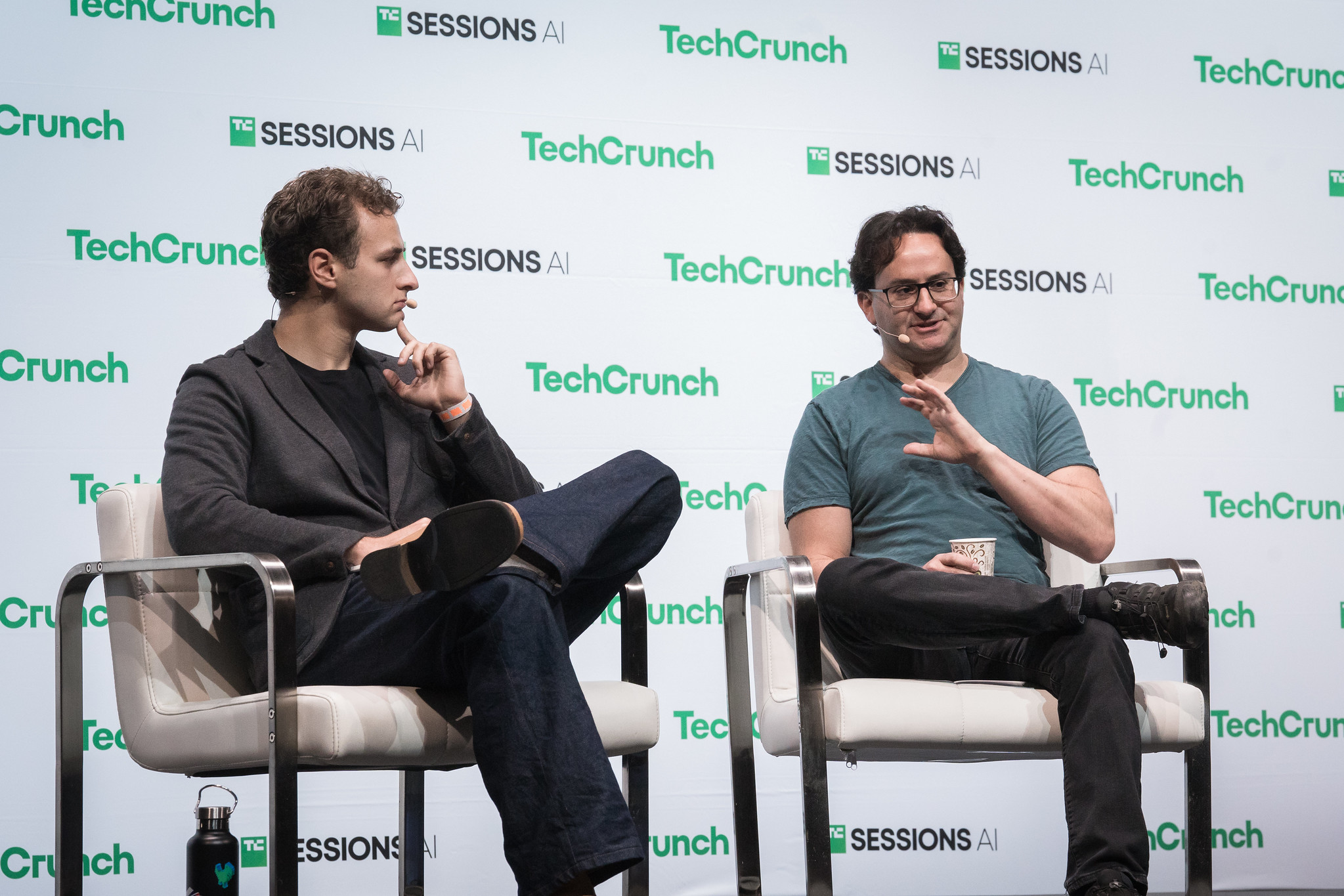
The relentless march of artificial intelligence, spearheaded by companies like OpenAI and Microsoft, is colliding with a fundamental and increasingly urgent constraint: the availability of vast amounts of electrical power. Far from being a mere logistical hurdle, this burgeoning energy crisis now stands as a primary bottleneck for AI deployment, shifting the focus from the race for advanced silicon chips to the struggle for reliable, scalable energy infrastructure. The leaders at the forefront of this technological revolution, including OpenAI CEO Sam Altman and Microsoft CEO Satya Nadella, are openly acknowledging the profound uncertainty surrounding how much power will ultimately be required to sustain and advance their ambitious AI endeavors.
The Unforeseen Bottleneck: From Silicon to Sockets
For years, the tech industry’s "compute" challenge primarily revolved around the fabrication and acquisition of advanced Graphics Processing Units (GPUs) and other specialized processors. Companies engaged in a frantic scramble to secure these high-performance chips, vital for training and running complex AI models. However, the narrative has dramatically shifted. Microsoft, a titan in the cloud computing space and a major investor in OpenAI, has reportedly encountered a peculiar problem: a surplus of cutting-edge AI chips sitting idle, unable to be deployed.
"The biggest issue we are now having is not a compute glut, but it’s a power and it’s sort of the ability to get the [data center] builds done fast enough close to power," Nadella revealed in a recent podcast discussion. He elaborated on the predicament, stating, "If you can’t do that, you may actually have a bunch of chips sitting in inventory that I can’t plug in. In fact, that is my problem today. It’s not a supply issue of chips; it’s the fact that I don’t have warm shells to plug into." This refers to commercial real estate jargon for data center buildings that are constructed and ready for equipment installation but lack the necessary power hookups and associated infrastructure. This stark reality underscores a fundamental disconnect: the rapid, agile pace of software development and chip manufacturing is now severely out of sync with the far slower, more capital-intensive process of building and energizing data centers and the underlying power grids.
A Decade of Dormancy, A Surge of Demand: The Energy Landscape Shift
The current energy dilemma facing the AI industry is rooted in a significant historical trend reversal within the U.S. electricity sector. For more than a decade, from roughly 2005 to 2015, electricity demand across the United States remained largely flat, even showing slight declines in some periods. This stability was primarily driven by increasing energy efficiency in homes and industries, coupled with slower economic growth post-2008 financial crisis. Utilities, accustomed to this plateau, adjusted their long-term planning accordingly, often delaying investments in new generating capacity or major grid upgrades.
However, over the last five to seven years, this equilibrium has been dramatically disrupted. The exponential growth of cloud computing, the proliferation of digital services, and, most recently, the insatiable energy appetite of artificial intelligence data centers have catalyzed an unprecedented surge in electricity demand. Reports from grid operators and energy analysts indicate that projected demand growth is now far outpacing utilities’ existing plans for new generation and transmission infrastructure. Data centers, which house the servers and networking equipment that power the digital world, are becoming enormous electricity consumers, often requiring hundreds of megawatts – equivalent to the power needs of a small city – for a single facility. This rapid escalation has forced data center developers to explore novel solutions, including "behind-the-meter" arrangements where they contract directly for power generation, often bypassing the traditional grid entirely or connecting directly to a dedicated power source. This approach aims to secure reliable and sufficient energy, but it also highlights the limitations and inflexibility of existing grid infrastructure.
The Scale of Ambition: Altman’s Vision and Investments
Sam Altman, a figure synonymous with the current AI revolution, has been vocal about the looming energy challenges and has even begun to put his personal capital behind potential solutions. Altman views the dramatic reduction in the cost of intelligence, which he estimates at an average of 40x per year for a given level of capability, as a "very scary exponent" from an infrastructure buildout standpoint. He posits that if this trend continues, the demand for underlying compute – and thus energy – will skyrocket to unimaginable levels, creating immense strain on global resources.
Altman’s long-term vision for AI’s future is intrinsically linked to a future of abundant, cheap energy. Recognizing that conventional energy sources and grid infrastructure are ill-equipped to handle this anticipated demand, he has made significant investments in frontier energy technologies. His portfolio includes backing Oklo, a nuclear fission startup focused on developing advanced micro-reactors capable of providing reliable, emissions-free power. He has also invested in Helion, a nuclear fusion startup that aims to harness the same energy process that powers the sun, promising an almost limitless supply of clean energy if successfully commercialized. Furthermore, Altman supports Exowatt, a solar startup that concentrates the sun’s heat and stores it for later use, offering a dispatchable renewable energy solution.
While these investments reflect a proactive approach to a generational problem, Altman readily acknowledges that none of these advanced technologies are ready for widespread commercial deployment today. Nuclear fission and fusion, despite their immense potential, face significant regulatory hurdles, require substantial capital investment, and have timelines measured in decades rather than years for broad impact. Even traditional fossil-based power plants, such as natural gas facilities, which are comparatively quicker to build, still take several years from conception to operation. Orders placed today for new gas turbines, for instance, are unlikely to be fulfilled and integrated into a power plant until later in the current decade, highlighting the inherent slowness of energy infrastructure development compared to the blistering pace of AI innovation.
The Appeal of Agile Energy: Solar’s Rise in Data Center Strategies
Given the protracted timelines and complexities associated with large-scale traditional power projects, tech companies have increasingly turned to more agile and rapidly deployable energy solutions, with solar photovoltaics (PV) leading the charge. The rapid adoption of solar power by data center operators is driven by several compelling factors: its increasingly inexpensive cost, its ability to generate emissions-free electricity, and its modularity, which allows for relatively quick deployment compared to gigawatt-scale conventional power plants.
There’s also a subtle, perhaps subconscious, affinity between solar PV and the semiconductor industry that appeals to tech companies. Both technologies are fundamentally built upon silicon substrates. Both roll off production lines as modular components – individual solar panels or silicon chips – that can be packaged together and integrated into parallel arrays. Just as combining numerous chips creates a more powerful computing unit, linking multiple solar panels into an array significantly amplifies electricity generation. This shared lineage and operational paradigm mean that the processes of procurement, deployment, and scaling for solar projects resonate with the engineering and logistical mindsets prevalent in the tech sector. Furthermore, the modularity and speed of construction for large-scale solar farms are much closer to the pace at which data centers themselves can be built, offering a more synchronized development pathway than traditional large-scale power infrastructure.
The Jevons Paradox: A Future of Unbounded Consumption?
Despite the current constraints, Altman and other proponents of advanced AI are firm believers in the economic principle known as Jevons Paradox. This paradox, first observed in the 19th century regarding coal consumption, posits that as technological efficiency increases the rate at which a resource is used, the overall demand for that resource tends to increase rather than decrease. In the context of AI, this means that even if AI models become significantly more efficient in their compute requirements, or if new, cheaper forms of energy become available, the net effect will likely be a massive increase in AI usage, leading to even greater overall energy consumption.
Altman articulated this perspective: "If the price of compute per like unit of intelligence or whatever – however you want to think about it – fell by a factor of a 100 tomorrow, you would see usage go up by much more than 100 and there’d be a lot of things that people would love to do with that compute that just make no economic sense at the current cost." This view suggests that the current high cost of AI compute is suppressing a vast, latent demand for AI applications that are presently uneconomical. If this cost barrier falls, the floodgates of innovation and deployment would open, from hyper-personalized learning environments and sophisticated scientific simulations to pervasive AI assistants and real-time decision-making systems across every industry. While there is a theoretical risk that AI could become so efficient that power plants sit idle, Altman’s comments strongly suggest he believes the demand surge driven by Jevons Paradox will overwhelmingly dominate, rendering such a scenario highly improbable.
Broader Implications: Market, Society, and Environment
The AI energy paradox extends far beyond the operational concerns of tech companies, rippling through markets, societies, and the environment.
Market Impact: The intense competition for power resources could drive up electricity prices, impacting not only data centers but also residential and industrial consumers. This shift could transform energy companies into pivotal players in the tech ecosystem, potentially becoming as strategically important as chip manufacturers. It will also spur unprecedented investment in new energy technologies and infrastructure, creating new markets and potentially reshaping existing ones. The financial landscape could see significant volatility, with Altman himself warning of companies being "extremely burned with existing contracts" if a truly cheap, mass-scale energy source emerges quickly.
Social Impact: The rapid proliferation of data centers, often located in rural or suburban areas with access to land and power, can strain local grids and communities. Concerns about noise, water usage (for cooling), and the visual impact of large energy infrastructure projects are already emerging. On the positive side, the need for new energy solutions could stimulate job creation in engineering, construction, and renewable energy sectors. However, the sheer scale of energy demand could also spark public debate about equitable resource distribution and the societal trade-offs inherent in an AI-driven future.
Environmental Impact: The energy demands of AI raise significant environmental questions. While tech companies are increasingly prioritizing renewable energy sources like solar, the sheer volume of power required still means a substantial carbon footprint if fossil fuels remain a primary source. This pressure is accelerating the push for sustainable AI and cleaner energy solutions, but the transition is complex. The environmental imperative is to ensure that the AI revolution doesn’t inadvertently exacerbate climate change, driving innovation towards net-zero or even carbon-negative energy production for data centers. The ethical implications of AI’s energy consumption, particularly in a world grappling with climate change, will undoubtedly become a more prominent discussion.
The Path Forward: Navigating the Energy Frontier
The challenges posed by AI’s insatiable energy appetite are multifaceted, requiring a coordinated and innovative response. Solving this energy dilemma is not merely a matter of building more power plants; it necessitates a paradigm shift in how energy is generated, distributed, and consumed.
Key strategies for navigating this energy frontier include:
- Accelerated Investment in Diverse Energy Sources: A broad portfolio of energy solutions, encompassing advanced renewables, grid-scale storage, small modular nuclear reactors, and potentially fusion power, will be essential. This requires significant capital and streamlined regulatory processes.
- Innovation in Energy Storage: The intermittency of many renewable sources necessitates robust and scalable energy storage solutions to ensure continuous power supply for data centers.
- Enhanced Data Center Energy Efficiency: Continued innovation in cooling technologies, server design, and AI algorithms themselves to reduce their energy footprint per unit of computation will be crucial.
- Closer Collaboration: A more integrated approach between tech companies, energy utilities, government regulators, and research institutions is vital to forecast demand, plan infrastructure, and overcome regulatory hurdles efficiently.
- Policy and Infrastructure Modernization: Governments must enact policies that incentivize clean energy development, streamline permitting for new energy and data center infrastructure, and invest in modernizing aging electricity grids to handle increased loads and distributed generation.
In conclusion, the AI revolution, while promising unprecedented advancements, is profoundly dependent on an energy revolution. The ability to meet the exponential power demands of next-generation computing will define the pace and ultimate scale of AI’s integration into society. As tech leaders grapple with this unforeseen bottleneck, the race to develop sustainable, abundant, and rapidly deployable energy solutions has become as critical as the quest for ever more intelligent algorithms.





